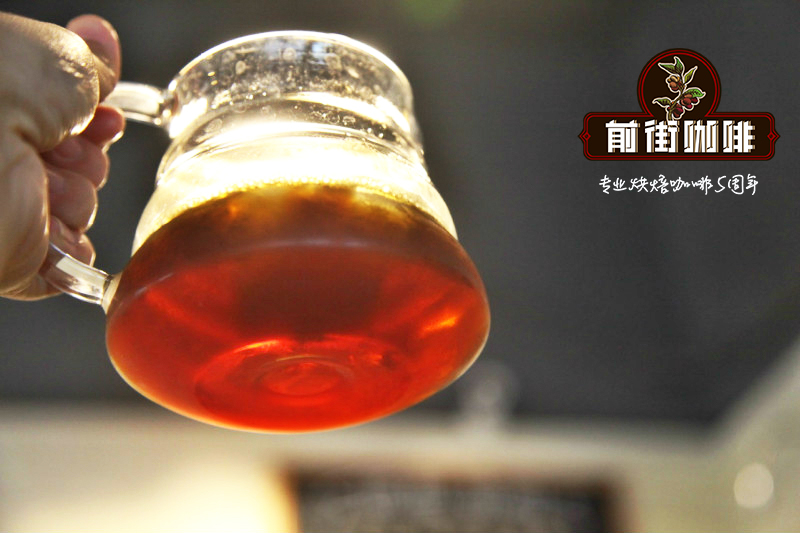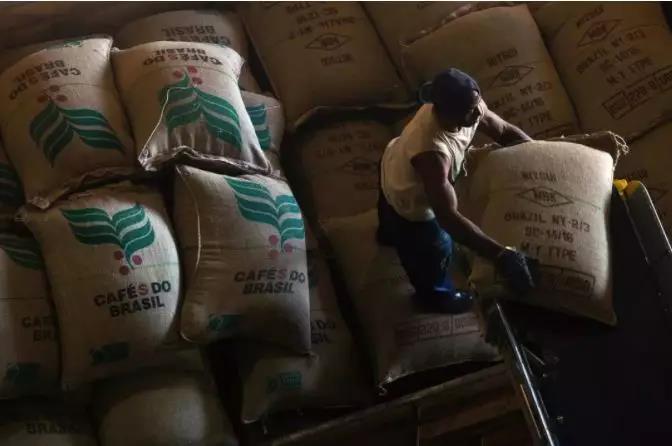The Cultural background of Brazilian Coffee, the largest country in Coffee production in the World

Professional coffee knowledge exchange more coffee bean information please follow the coffee workshop (Wechat official account cafe_style)
< 1 > Brazil < Brazil >
The official state of Brazil is called Federative_Republic_of_Brazil, and the regime is the Federal Republic. After many migrations, the capital is now located in Brasilia < Brasilia >. The country is divided into 21 states, four regions and a special federal district.
The total population is about 155 million, ranking sixth in the world in 1990, but because of its vast territory, the average population density is not high. But more than 2/3 of the population lives in coastal areas and big cities. At present, most of the population are descendants of intermarriage between Portugal and Indians or Africans. After the Portuguese settled in Brazil, the number of Indians decreased significantly, leaving only 200000, mostly in the Amazon.
Portuguese is the official language because it was colonized by the Portuguese, but Brazilian Portuguese is very different from its place of origin, due to the influence of Indian and African languages. Some place names, animal and plant names also continue to use African languages. It is worth mentioning that although Portuguese and Spanish look very similar, there are great differences in pronunciation, but most Brazilians understand Spanish; as for English, it is less popular.
It covers an area of 8.51 million square kilometers, accounting for almost half of the total area of South America and 236 times the size of Taiwan. it is the fifth largest country in the world, second only to Canada, Soviet Russia, China and the United States. The topography is mainly plateaus and plains, and the plateau area accounts for about 1/2 of the country: the Guyana plateau in the north and the Brazilian plateau in the east. The Brazilian plateau is the largest plateau in the world, low in the north and high in the south. To the east of the Brazilian plateau is the coastal plain and the most densely populated area. In addition, between the Guyana Plateau and the Brazilian Plateau is the vast Amazon plain, accounting for 1/3 of the country's area.
Because of its vast territory, Brazil has a diverse climate. The equator passes through the north and the Tropic of Cancer runs through the south, so Brazil's climate is generally divided into tropical, subtropical and temperate regions. The climate of the central highland at the southern end is cool and temperate; the climate of the equatorial rainforest is mainly distributed in the Amazon basin in the north and north-central regions; and the narrow coastal plain in the northeast region is subtropical. In addition, the area of Serdo < Sertao > in the northeast is a semi-dry climate area, because of the uneven distribution of rainy season, it is prone to torrential rains and periodic droughts. The overall climate, except that the winter < June-August > south of Rio de Janeiro > in Rio de Janeiro will be affected by cold snap, the temperature is relatively low, and it occasionally snows, the rest of the region is like spring all the year round, and the climate is cool and pleasant. Summer is the rainy season from October to March, but thunderstorms are easy to fall throughout the year.
< 2 > the largest coffee producer in the world
Coffee, which originated in Africa, was introduced to Brazil from the Arabian Peninsula in 1720 and has been growing since then. In the 19th century, it replaced sugar as Brazil's main export. Although Brazil has more frequent natural disasters than other coffee producing areas, its vast acreage is sufficient to make up for this natural disadvantage. it has now become the world's largest coffee origin (Colombia and Vietnam are in second place). Various grades and types of coffee account for 1/3 of the world's total (3/4 of the world's total output at the time of the largest production), which plays a very important role in the global coffee market. Brazil's coffee industry adopts a price strategy, that is, low-cost exports and large-scale cultivation, with an annual output of about 2.6 million tons. Because Brazil has been greatly affected by overproduction, its output will be limited by international coffee agreements. In addition, in Brazil, the type of coffee, the area of arable land and the amount of export are all led by the government, because coffee exports are still Brazil's largest source of economy. Therefore, in recent years, the Brazilian government has also actively promoted the modernization of coffee, and its strategies include: improving coffee quality, increasing output per unit area, introducing new varieties, using relatively perfect tree species management and modern processing equipment. Therefore, today, most of the processed coffee in Brazil is exported (such as instant coffee).
Brazilian coffee is mainly produced in the north of Parana to Minnesota, but most of the better quality coffee beans are concentrated in Bathia < Bahia > and Little Jerry State < Minas Greais, also known as Sul de Minas >.
Generally speaking, Brazilian coffee tastes mild and insipid, and it presents different flavors because of their growing environment, treatment and methods. Some of the better caffeine sunshine and washing process, some have obvious drupe flavor and strong aroma, and some are even sweet, are very suitable for making espresso raw materials.
Because of the Brazilian government's industrial policy and their country's cheap products, it is not the best in the world, but it is famous for its mild taste.
Important Notice :
前街咖啡 FrontStreet Coffee has moved to new addredd:
FrontStreet Coffee Address: 315,Donghua East Road,GuangZhou
Tel:020 38364473
- Prev

Cultural characteristics of Brazilian Coffee introduction to the growth Environment and processing process of Brazilian Coffee
Professional coffee knowledge exchange more coffee bean information please pay attention to the coffee workshop (Wechat official account cafe_style) Coffee gives people the feeling is elegant and noble drink, its strong aroma is fascinating. Coffee used to be a luxury drink, but now it has become a popular drink during leisure or afternoon tea, and coffee is even made into all kinds of snacks.
- Next

Brazilian Bolivian coffee bean flavor characteristics taste different Brazilian coffee planting history story
For more information on coffee beans, please follow the coffee workshop (Wechat official account cafe_style) Coffee from Brazil is compared with coffee from other places < 1 > Coffee in Taiwan is a very suitable place for coffee growth because of its mild climate, abundant rainfall and many high mountains on the Tropic of Cancer. In 1884, the British were introduced into the three Gorges in Taipei for trial planting, during the Japanese occupation era, Japan.
Related
- Detailed explanation of Jadeite planting Land in Panamanian Jadeite Manor introduction to the grading system of Jadeite competitive bidding, Red bid, Green bid and Rose Summer
- Story of Coffee planting in Brenka region of Costa Rica Stonehenge Manor anaerobic heavy honey treatment of flavor mouth
- What's on the barrel of Blue Mountain Coffee beans?
- Can American coffee also pull flowers? How to use hot American style to pull out a good-looking pattern?
- Can you make a cold extract with coffee beans? What is the right proportion for cold-extracted coffee formula?
- Indonesian PWN Gold Mandrine Coffee Origin Features Flavor How to Chong? Mandolin coffee is American.
- A brief introduction to the flavor characteristics of Brazilian yellow bourbon coffee beans
- What is the effect of different water quality on the flavor of cold-extracted coffee? What kind of water is best for brewing coffee?
- Why do you think of Rose Summer whenever you mention Panamanian coffee?
- Introduction to the characteristics of authentic blue mountain coffee bean producing areas? What is the CIB Coffee Authority in Jamaica?

